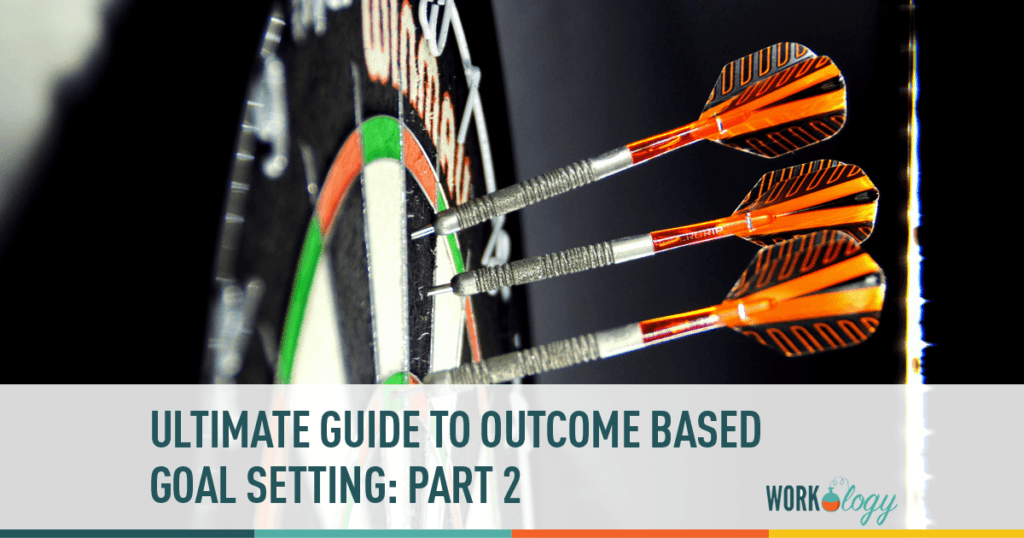In my last post, we talked about the first steps of Outcome Based Goal-Setting, Identifying the ultimate outcome for you organization. In this post, we’ll continue through the 5 questions that everyone needs to be able to answer in order to be part of a dynamic performance-based organization:
1. What is the ultimate outcome?
2. Who is the ultimate customer?
3. What are we doing that is enabling the ultimate outcome?
4. What are we doing that’s not?
5. How will we measure success?
STEP 2: OUR ULTIMATE CUSTOMER
Once people are supporting the broader outcome – one they remember, that excites them – it’s time to figure out who the ultimate customer is.
And there is only one customer. Everyone else is a resource to help you delight the ultimate customer.
CHALLENGE:
Often, you will hear people say “everyone is my customer” or “I have internal and external customers”. When you’re serving 14 different customers, the real customer becomes lost.
HOW TO GET TO THE ULTIMATE CUSTOMER:
First, identify who’s not the customer (Think of everyone who’s not the ultimate customer as a resource or tool that you can utilize to serve the ultimate customer).
EXAMPLE:
If you’re in Public Relations, you may say that the Wall Street Journal, TIME Magazine or a particular journalist is your customer. But they’re not. They’re a resource that you tap to communicate to your ultimate customer – perhaps about your organization’s new product or efforts to ‘go green.’ In either case, you’re talking to the customer – and that’s not a journalist.
So who is your ultimate customer?
Everyone in the organization must agree on who this is so that employees direct all work activities towards delighting the one customer. For ABC Car Gadgets, the ultimate customer is the shopper who buys parts and services – whether in their stores or on their website.
SAY:
If everyone we thought was our customer is now our resource, who is our ultimate customer?
CHALLENGE:
Some might say, “Well, that’s easy for a store clerk to figure out at ABC Car Gadgets. They come in direct contact with the customer every day. I’m in corporate Human Resources and spend my time serving what I thought were my corporate clients in the office every day. How do I affect the ‘ultimate customer’?”
This is what every person in every position of every department needs to figure out and connect to. Otherwise, your work activities might fit nicely into your S.M.A.R.T. goal; but for the most part, they’ll be irrelevant.
EXAMPLE:
The Human Resources employee is responsible for corporate culture, retaining and attracting talent, management coaching and the like. If they do their job well, then the resources (employees) have the right foundation to do their jobs well, and this, in turn, filters down to the ultimate customer. If they don’t do their jobs well, then engagement, morale and productivity suffer and, in turn, these declines affect – you guessed it – the ultimate customer.
DO:
Have each person trace how their role affects the ultimate customer. This will be a critical piece in defining measurable goals that achieve results against the ultimate outcome.
STEP 3: IDENTIFY ACTIVITIES THAT ENABLE THE OUTCOME & ACTIVITIES THAT DON’T
Once people are supporting the broader outcome – one they remember, that excites them – it’s time to figure out who the ultimate customer is.
And there is only one customer. Everyone else is a resource or tool to help you delight the ultimate customer.
CHALLENGE:
Now comes each person’s task: to figure out what they do on a daily basis that enables the ultimate outcome, and in turn, serves the customer. It’s equally critical for them to figure out what they do that doesn’t contribute to this at all. You’ll mostly discover that there is a lot of wasted time – really, a lot.
DO:
Have each person work with their functional team to figure out which activities are specifically helping them drive toward the ultimate outcome and which activities are getting in the way (i.e.,wasting time like unproductive meetings).
WHOSE JOB IS IT TO SET GOALS?
Setting results (you may have referred to your results as ‘goals’ in the past) is not solely the job of management.
DO:
• Take everyone through the team exercise in this guide
• Have each employee look at their current goals
• Run each (current) goal through the outcome-based thinking filter
• Toss goals that are ‘rules’-based and irrelevant
• Toss goals that sound like a job description
• Toss anything that isn’t measurable
• Re-write goals that include activities and specific measures that you can defend (they affect the ultimate outcome and customer)
• Take your new goals to your manager for discussion/feedback/coaching
In a performance-based work culture, results are fluid and flexible. Revisit agreed upon results as often as you feel necessary. Do not let an agreed upon result hold you hostage if it no longer makes sense.
Re-write it. Tweak it until it makes sense. Visit with your manager to get buy-in and support.
So, what are your goal-setting challenges? Would this kind of goal-setting method work for your team? Give it a try and share your thoughts in the comments. I would love to hear about it!








